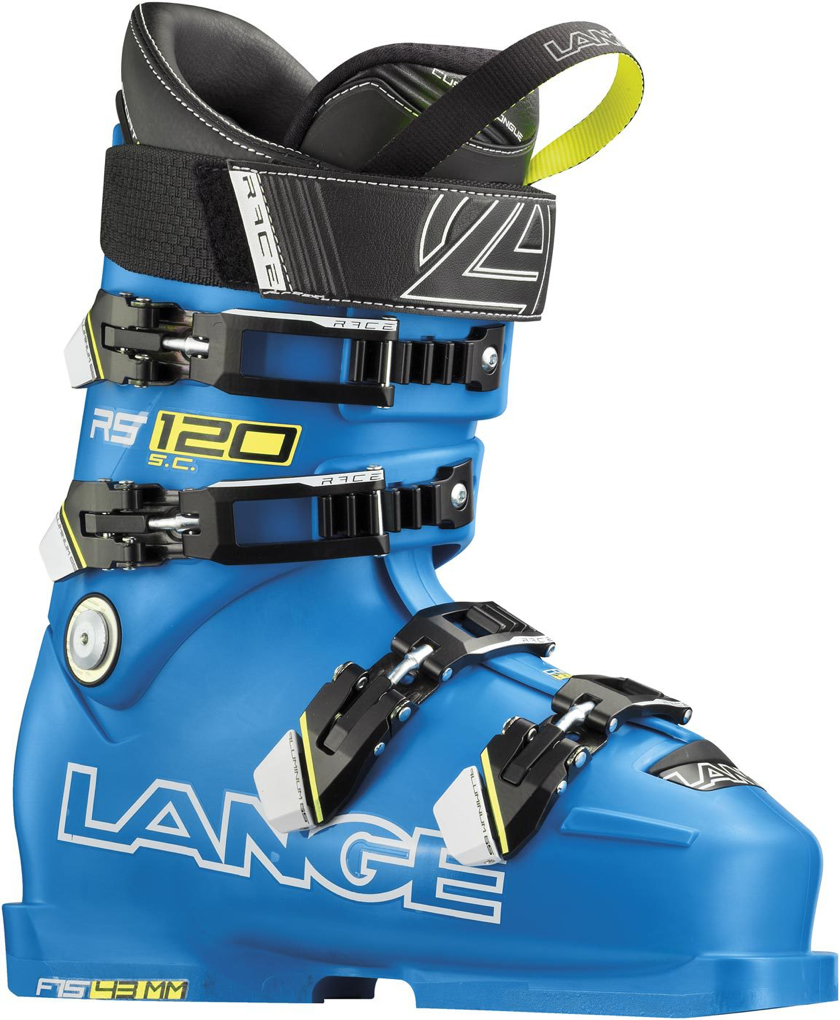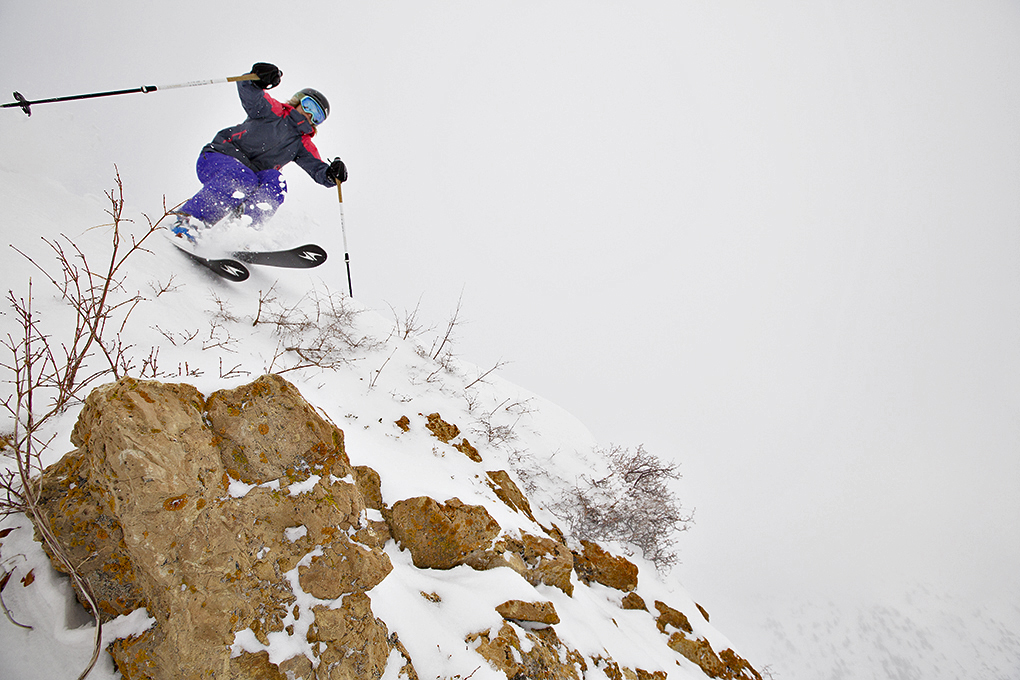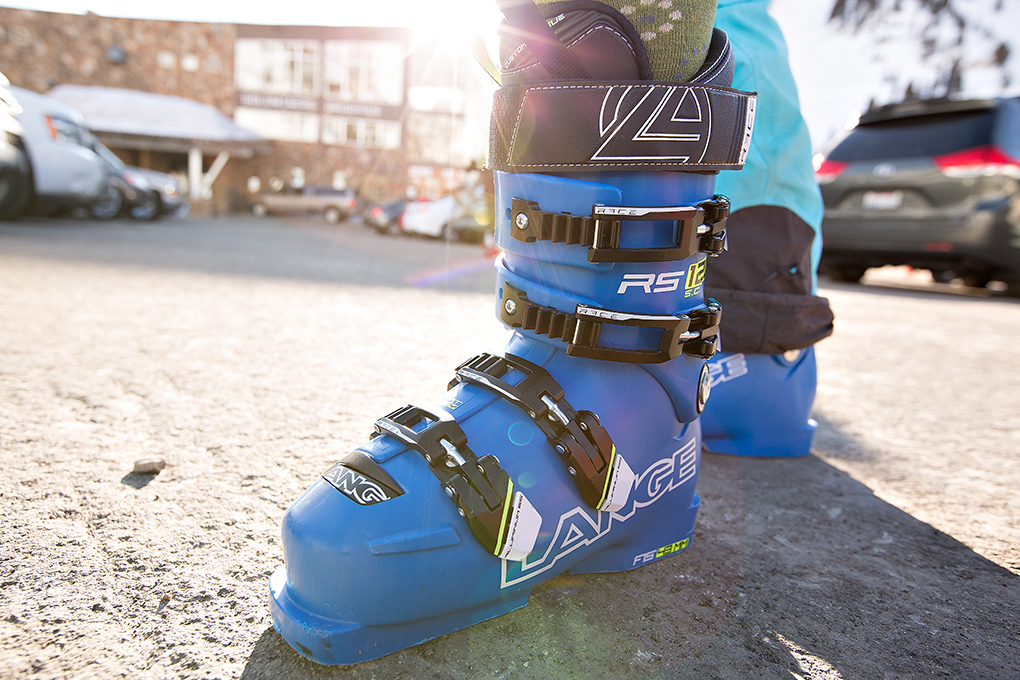
Boot: 2014-2015 Lange RS 120 S.C.
Size Tested: 24.5 / Boot Sole Length 286mm
Stated Flex: 120
Available Sizes: 21.5 – 28.5
Stated Last: 97mm
Liner: PRO fit, W/JR Profile
Reviewer Info: 5’6”, 125 lbs, former racer, aggressive & dynamic skier
Foot: size 8 / 8.5 street shoe, unusually narrow foot, long and low arch, with a high-volume ankle and calf
Days Tested: 28
Test Locations: Alta Ski Area, UT; Bridger Bowl, MT; Crested Butte, Telluride, & Arapahoe Basin, CO; Craigieburn, Temple Basin, Broken River, and Mt. Cheeseman club fields of New Zealand
After leaving the race world and retiring my race boots several years ago, I’ve spent most of my time in alpine-touring, or AT boots. Some of these boots, like the Black Diamond Shiva Mx, still offer solid performance on the way down, but have a walk mode and are slightly lighter than a dedicated alpine boot. These stiffer AT boots have served me well as a “one-quiver boot” that can be skied in both the resort and backcountry. Still, I’ve yet to find an AT boot that skis quite like a high-performance, dedicated alpine boot.
Although I’ve appreciated the versatility of the AT boots I’ve skied, I wanted a boot that I could push harder inbounds. At the same time, I hoped to find a boot that was more comfortable to spend a whole day in than a plug race boot.
The Lange RS 120 S.C. fits the bill perfectly. According to Lange, the RS 120 S.C. is for “technical skiers who demand a high performance boot without compromising comfort.” With its stated 120 flex, the RS 120 S.C. should be plenty supportive for more aggressive skiing, but feel more comfortable with its slightly wider last. In this review, I will try to give the most accurate description possible of my foot, how my foot fits in the RS 120 S.C., and the boot’s performance.
Fit & Sizing
The RS 120 S.C. fits my foot very well, and it may be the right fit for you, too. Still, when it comes to buying boots, my biggest recommendation is to determine what you’re looking for in a boot in terms of performance, and then go to a good boot fitter to explore your options. Fit is one of the most important things when it comes to boots, so you want to make sure the boot fits you well. For more information on boot fitting and how to select the right boot, I’d recommend taking a look at Charlie Bradley’s Boot Fitting 101 article.
The bootfitters at Salt Lake City’s Inkline Foot Science assessed my foot as very narrow and low-volume, with a long and shallow arch, and a high-volume ankle and calf. In theory, this means my feet should work well in a wide range of boots. And while I’ve worn a number of boots in the past that have fit well (some include the Nordica Dobermann and Rossignol Radical World Cup 110 race boots, and the Black Diamond Shiva Mx), the RS 120 S.C. is the most comfortable boot I’ve worn. Right out of the box, the fit of RS 120 S.C. was snug, with no noticeable pressure points or pinching.

On me, in a size 24.5, the RS 120 S.C. has a fairly tight “performance fit,” though I wouldn’t call it a full race fit. With a size 8 / 8.5 foot in street shoes, I probably could have downsized to a 23.5 size in the boot—which is what I did, painfully, when I was racing. However, with this boot I was willing to sacrifice a little bit of performance for the sake of comfort.
In the 24.5, my big toe touches the front of the boot without feeling squished, and I have a tiny bit of extra space in the heel pocket. Even though my toes move backward slightly while skiing when I pressure the front of the boot, the extra space was never so much that my feet felt like they were swimming. The RS 120 S.C. has a 97mm last, so the boot feels snug around the rest of my foot, without feeling as constricting as a 92mm-lasted race boot.
The S.C. stands for “short cuff,” which is meant to provide a better fit for people with shorter calves and for juniors. The height of the boot felt appropriate for my legs, and is just about the same height of the cuff on the Shiva Mx, which has a womens-specific design. Lange’s S.C. cuff is also featured on the RS 110 S.C., which you can read about in Morgan Sweeney’s review.
The RS 120 S.C. was so comfortable that I skied in them for 13 days without any modifications. I definitely recommend investing in a pair of custom footbeds, no matter what boot you end up buying. But, for what it’s worth, I didn’t experience too much discomfort while skiing the RS 120 S.C. with just the stock footbed.
Adjustments at Gnomes Alpine Sports
Once in New Zealand, I wanted to get the boot’s fit a little more dialed, and worked with Leith Rhodes at Gnomes Alpine Sports in Darfield. Leith is one of the best bootfitters I’ve worked with, and am extremely happy with the adjustments she made. Leith examined my feet and also evaluated my stance using Gnomes’ computerized foot pressure analysis system.
After a thorough evaluation, she molded a pair of Sidas footbeds, using a premium model that provided a little extra cushion for several of my dropped metatarsal heads, and filled in some of the extra volume in my heel pocket. Leith also added a layer of foam to the tongue of one of my liners to eliminate some pain I felt while flexing the boot forward. Once all this was taken care of, the RS 120 S.C.’s fit felt both precise and extremely comfortable.
Liner
As Morgan mentioned in her review of the RS 110 S.C., the stock liner in the RS 120 S.C. is quite good, and reminds me of the liners of several of the race boots I’ve used. The liner has a layer of stiffer plastic reinforcing the tongue and the back of the cuff. There is also a little extra cushioning on the top of the tongue, but overall it’s fairly thin.
The boot’s liner is quite a bit slimmer and stiffer than the Shiva Mx’s liner, yielding a more precise feel on snow. The liner doesn’t have any sort of lacing system, which I’ve seen on both AT and race boot liners, but I didn’t find this to be an issue.

My only gripe with the liner is that there is a loop of webbing attached to the liner’s tongue to help remove the liner from the shell or to adjust the tongue. On many other boots, this loop is attached to the back of the cuff, or there is a loop on the tongue and cuff, to make it easier to pull the liner out of the shell. I actually found it quite difficult to remove the liner from the shell; it was hard to get a good grip on the plastic on the the back of the liner’s cuff without a loop (not a huge issue, but slightly annoying).
Other Features
All of the buckles on the RS 120 S.C. are solid, and I haven’t broken any of them yet. The powerstrap works fine, though it does tend to loosen up throughout the day. In this respect, it’s similar to other stock velcro power straps I’ve used, and the only real solution I’ve found is to swap it out for a Booster strap.
